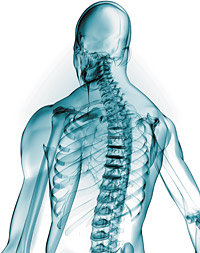"The guidelines aim to describe appropriate care based on the best available scientific evidence and broad consensus, reduce inappropriate variation in practice, and provide a more rational basis for referral," said Andre Bussieres, DC, FCCS (C), MSc, primary author of the guidelines. "We are very pleased to announce that [they] were recently posted on the [NGC Web site]." He added: "This is important news for all chiropractors aiming to improve patient care while potentially reducing harm."4
 A November/December 2007 JMPT article provides a comprehensive introduction to the guidelines, including the process that led to their development.5 It states: "The initial impetus for this project occurred in 2003 when the Council on Chiropractic Education in Canada (CCEC) requested a revision of the diagnostic imaging guidelines used at the chiropractic teaching clinic of L'Universite du Quebec a Trois-Rivieres (UQTR). CCEC recommended incorporating protocols that were centered on the clinical presentation of patients. ... The proposed diagnostic imaging guidelines represent a shift to a more evidence-based approach and are supported by more than 680 primary and secondary citations."
A November/December 2007 JMPT article provides a comprehensive introduction to the guidelines, including the process that led to their development.5 It states: "The initial impetus for this project occurred in 2003 when the Council on Chiropractic Education in Canada (CCEC) requested a revision of the diagnostic imaging guidelines used at the chiropractic teaching clinic of L'Universite du Quebec a Trois-Rivieres (UQTR). CCEC recommended incorporating protocols that were centered on the clinical presentation of patients. ... The proposed diagnostic imaging guidelines represent a shift to a more evidence-based approach and are supported by more than 680 primary and secondary citations."
According to Dr. Bussieres, a professor in the chiropractic department at UQTR, the guidelines, which attempt to prevent "overuse, underuse and misuse" of imaging services and improve quality of care, address common clinical scenarios, such as nonspecific acute, subacute or persistent back and neck pain with normal neurologic examination (for which radiographs are not initially indicated), to cases of blunt trauma with no improvement after four to six weeks of conservative care or increasing disability, for which X-rays should be considered. He also notes cases in which urgent specialized imaging should be considered, such as signs/symptoms of sphincter or gait disturbance, saddle anesthesia, severe neurologic deficit, and systemic illness.4
Dr. Bussieres also mentioned that implementation studies are currently underway to see gauge what impact the guidelines are having on provider behavior.
The NGC is an initiative of the Agency for Health Care Policy and Research, U.S. Department of Health and Human Services. To access the Diagnostic Imaging Practice Guidelines for Musculoskeletal Complaints in Adults, visit www.ngc.gov.
References
- Bussières AE, Taylor JAM, Peterson C. Diagnostic imaging practice guidelines for musculoskeletal complaints in adults - an evidence-based approach. Part 1: Lower extremity disorders. JMPT, 2007;30:684-717.
- Bussières AE, Peterson C, Taylor JAM. Diagnostic Imaging Guideline for Musculoskeletal Complaints in Adults - an evidence-based approach. Part 2: Upper Extremity Disorders. JMPT, 2008:31:2-32.
- Bussières AE, Taylor JAM, Peterson C. Diagnostic imaging practice guidelines for musculoskeletal complaints in adults - an evidence-based approach. Part 3: Spinal disorders. JMPT, 2008;31:33-88.
- E-mail from Dr. Bussieres to Dynamic Chiropractic, May 13, 2009.
- Bussières AE, Peterson C, Taylor JAM. Diagnostic imaging practice guidelines for musculoskeletal complaints in adults - an evidence-based approach. Introduction. JMPT, 2007;30:617-683.




